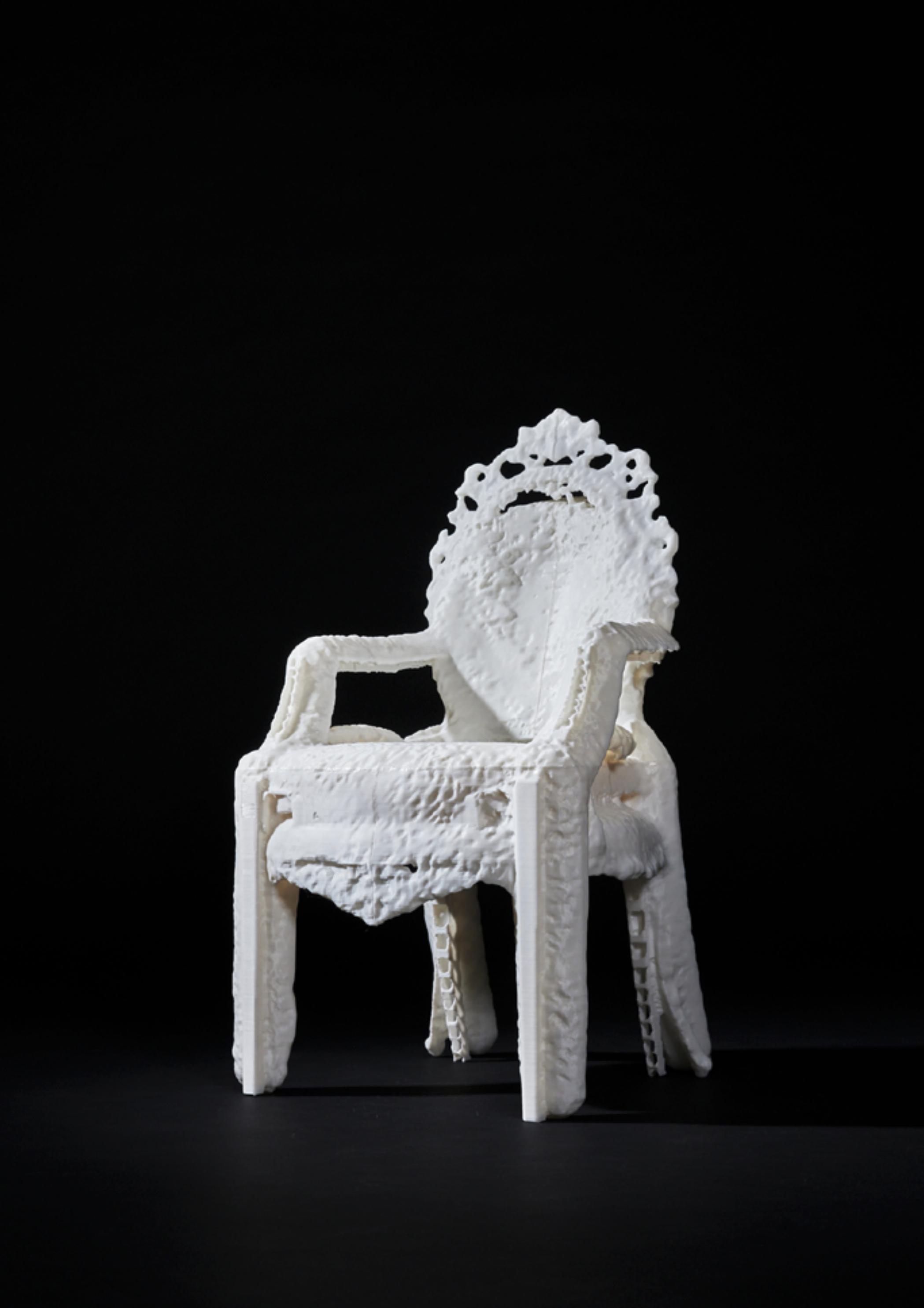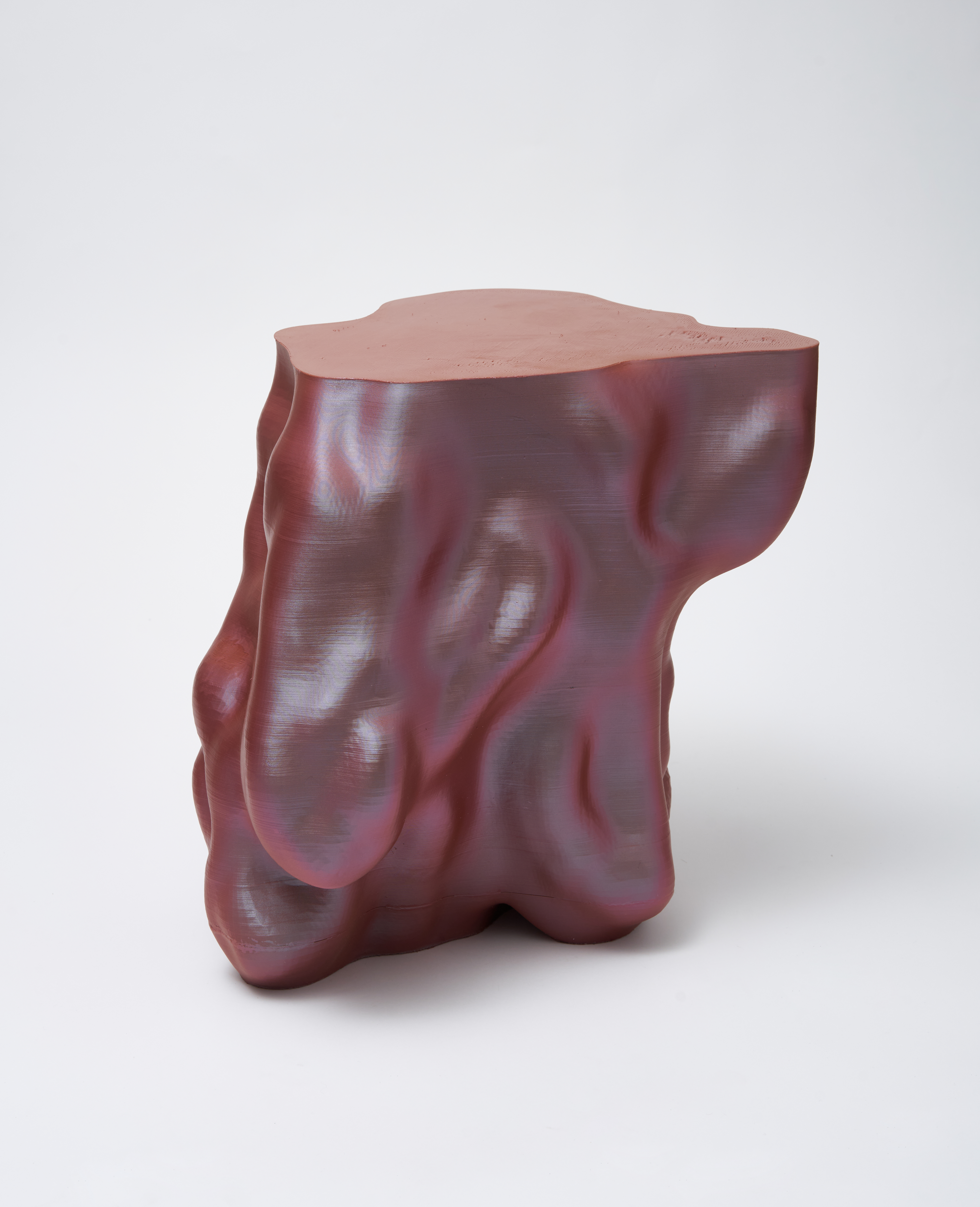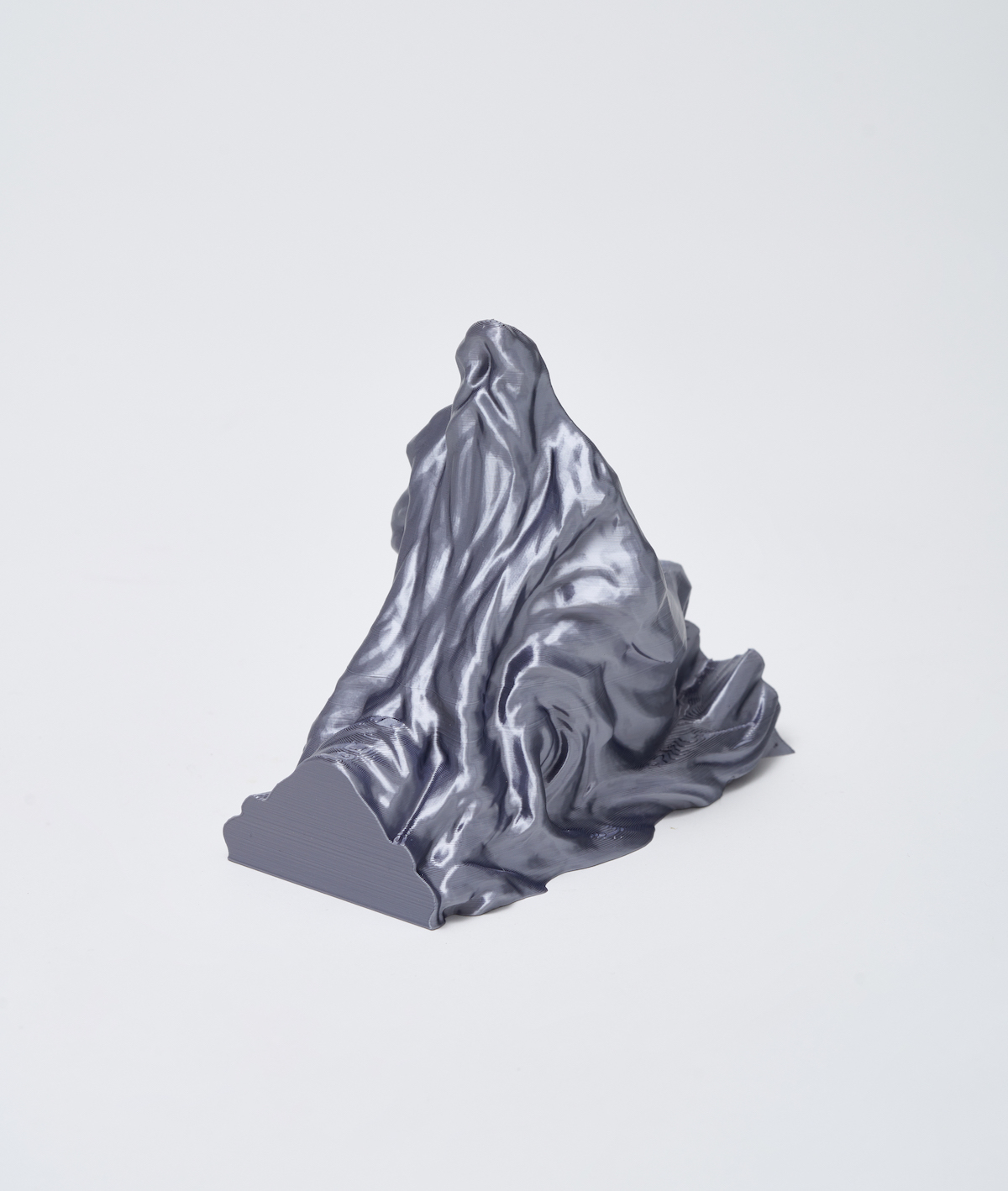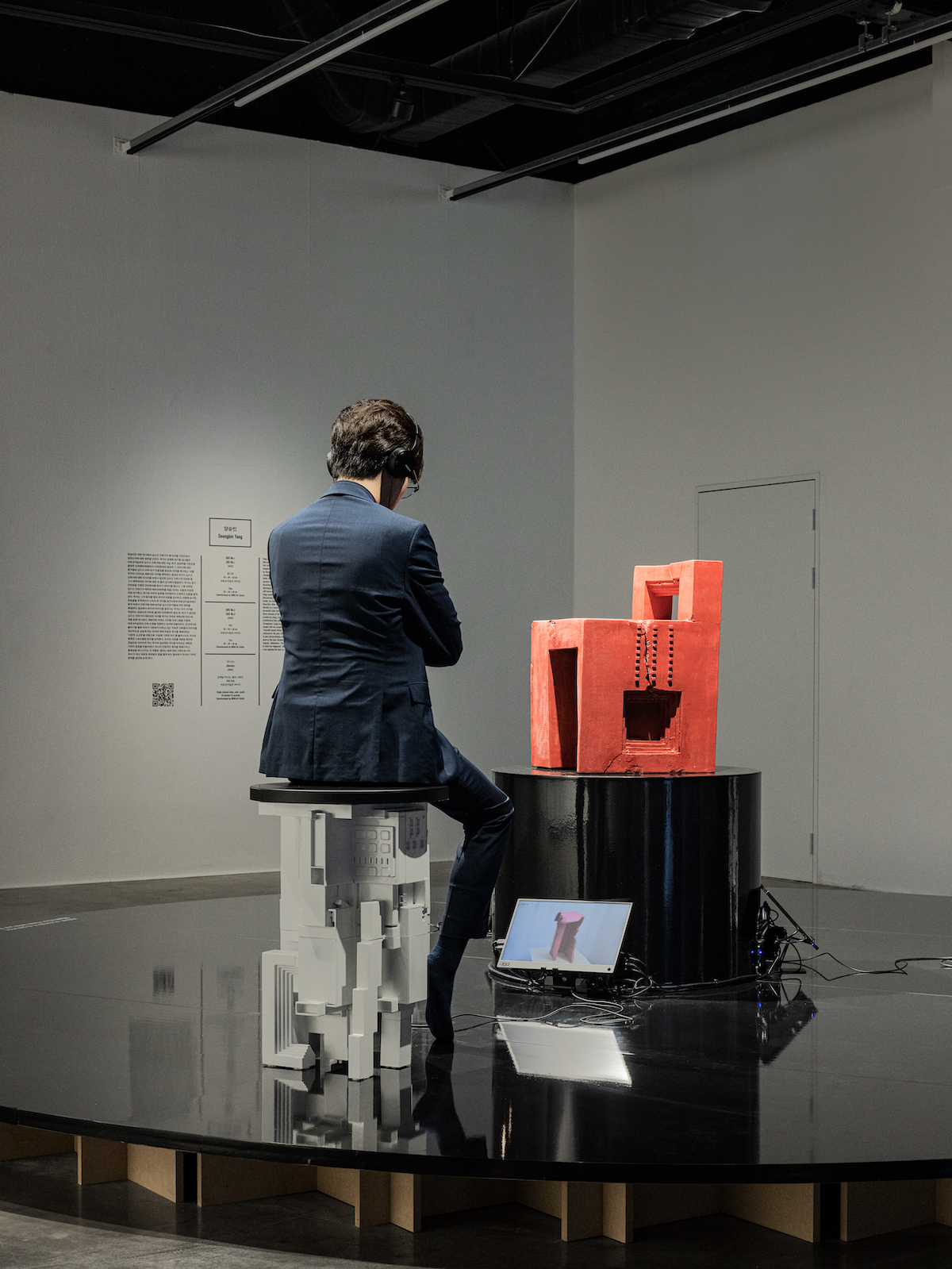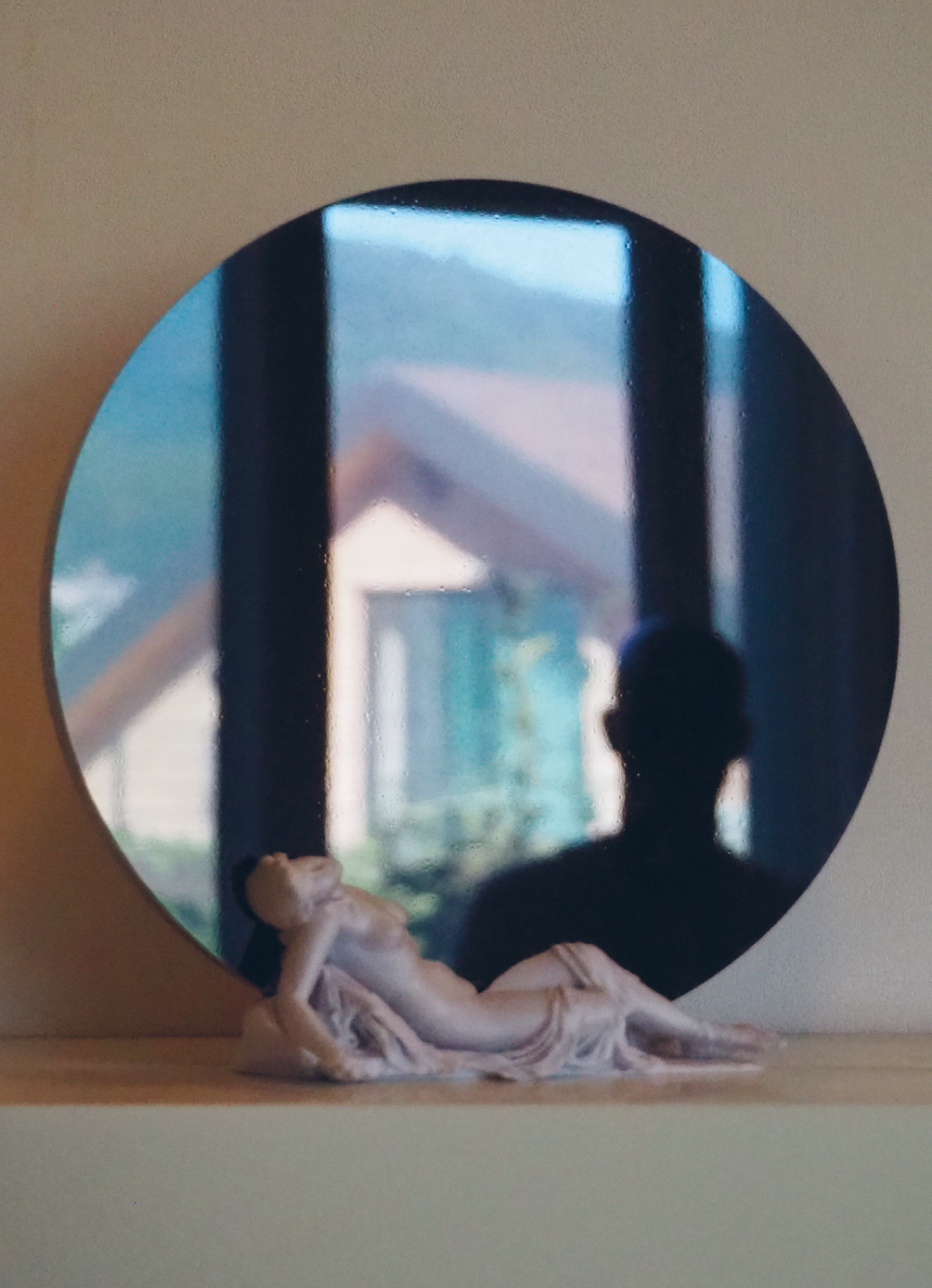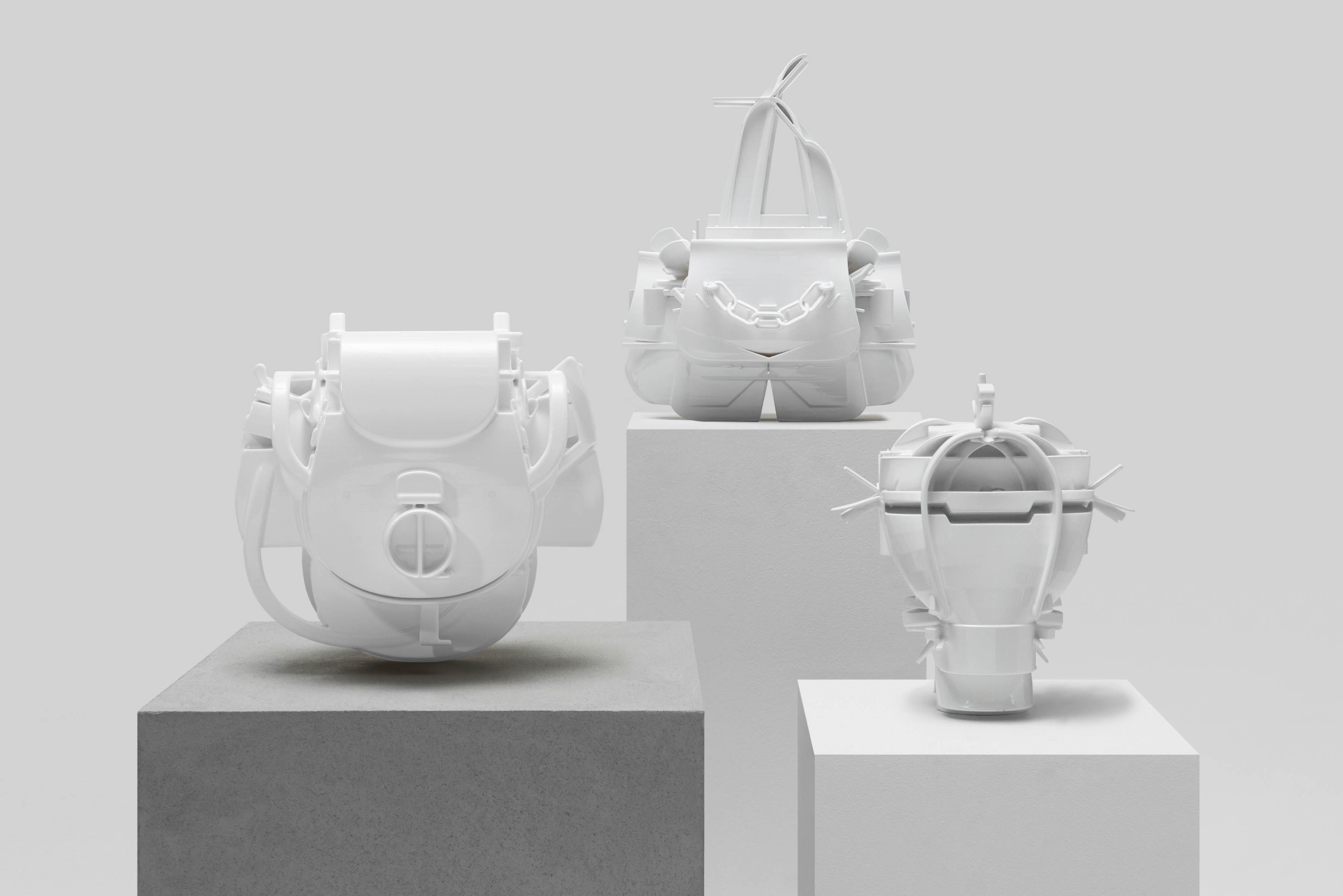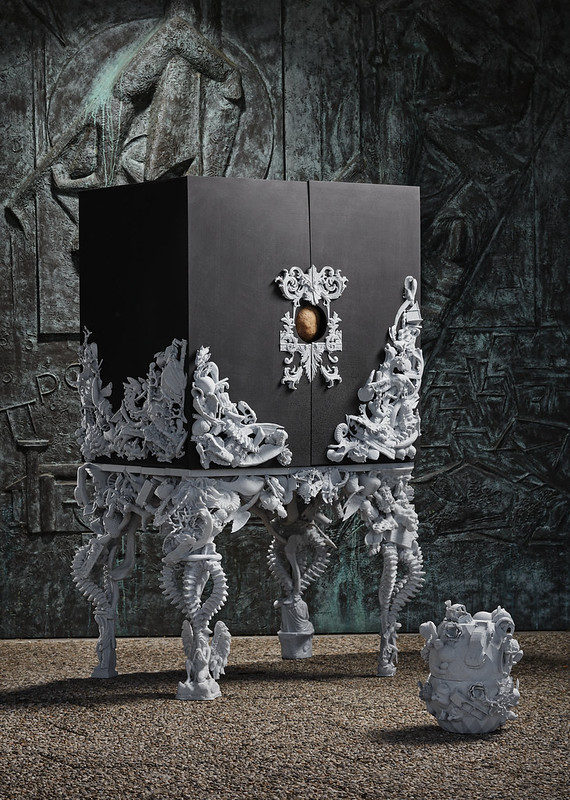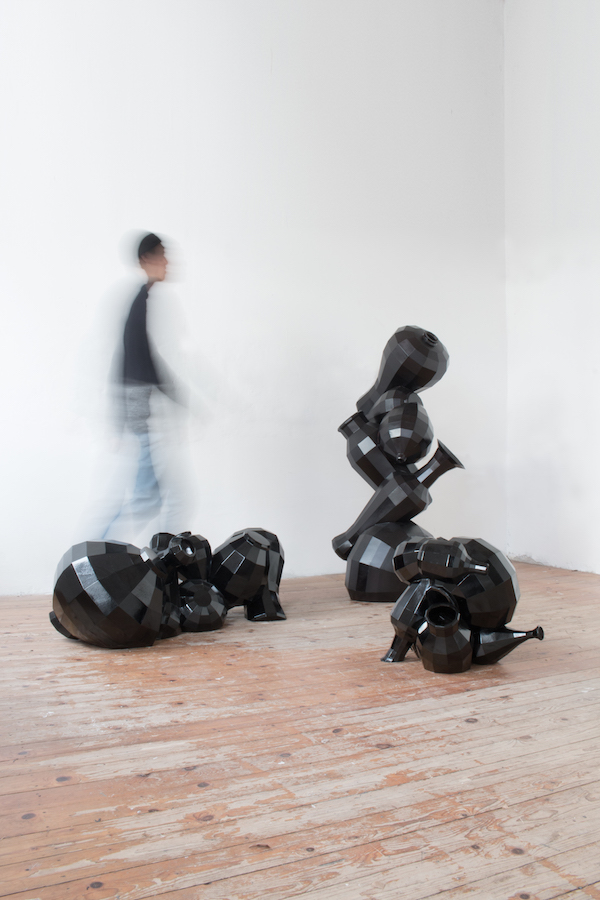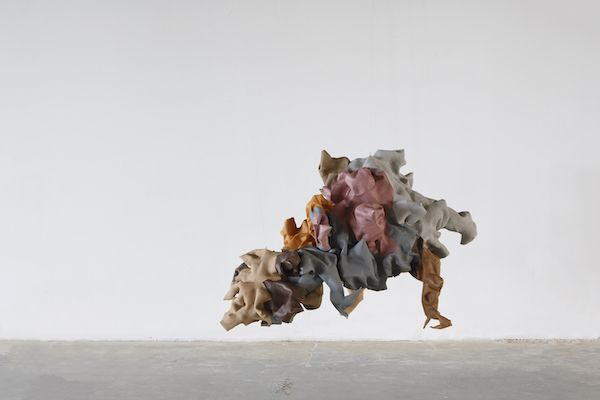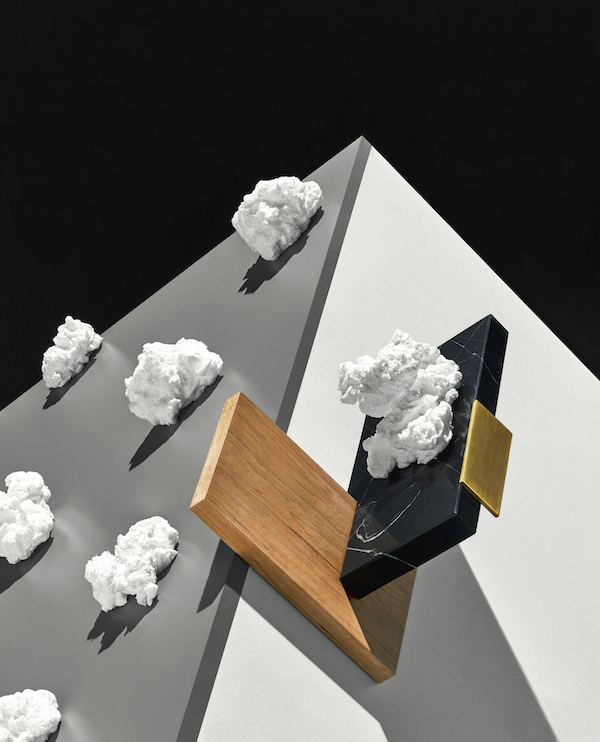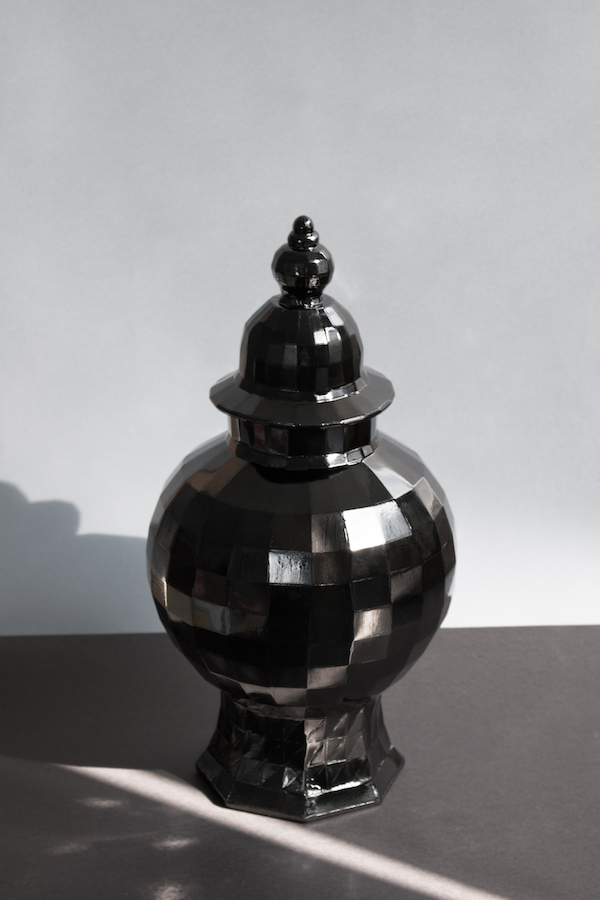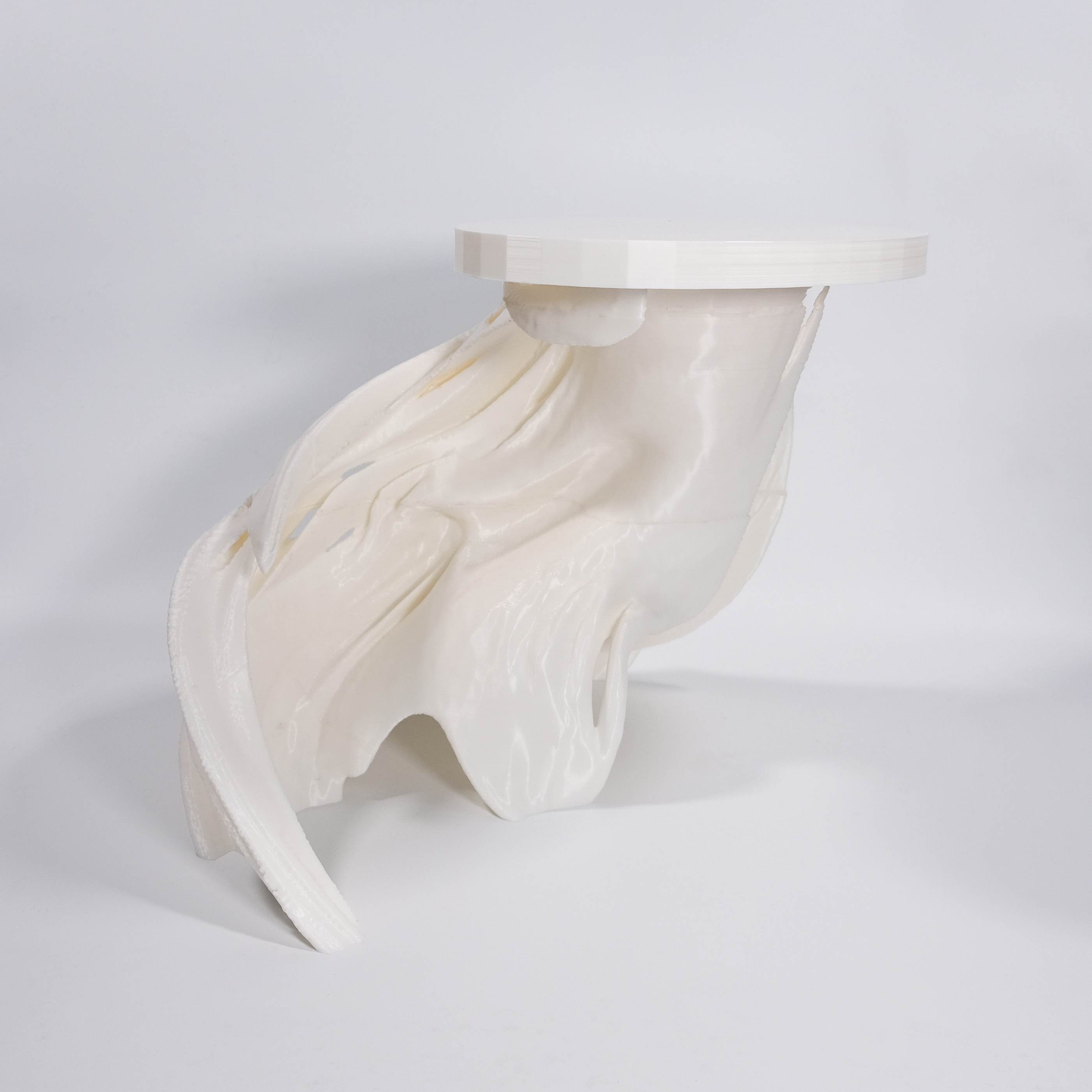

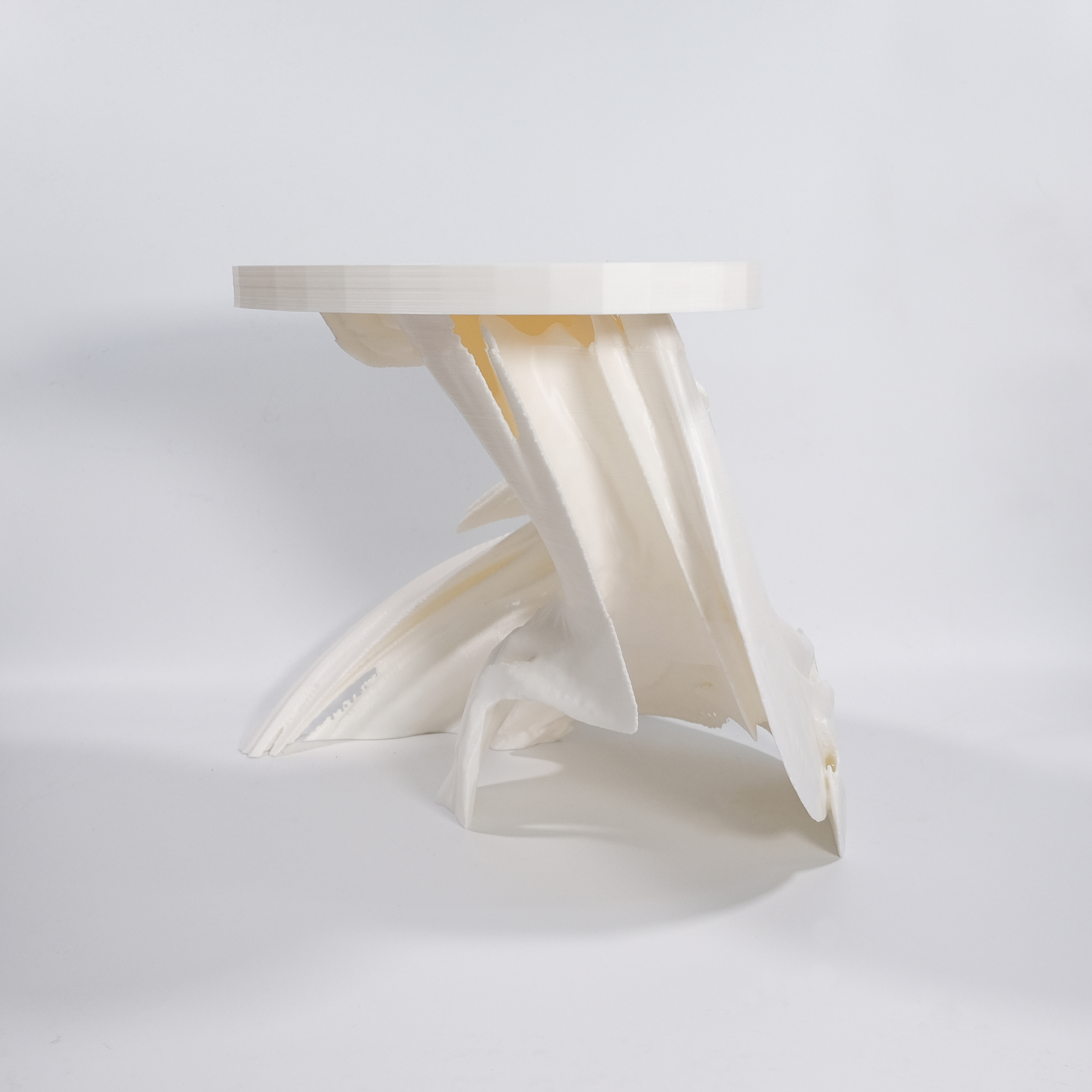

Deep Fried Side Table
PLA
2025
500 (W) X 650 (L) X 450 (H) mm
-

Deep Fried_Louis Ghost Chair
PLA
2025
650 (W) X 710 (L) X 1250 (H) mm
When I was young, I visited my father’s office and saw a Juicy Salif citrus squeezer by Philippe Starck on his bookshelf. I didn’t know anything about design, nor did I know what it was for. But its unique shape, which looked like something an alien might leave behind after visiting Earth, left a huge impression on me. In the early aughts, Starck was referred to as “one of the three greatest designers in the world” in Korea. I’m not sure who coined that phrase, but I suppose it meant that he was such a famous and incredible designer that even non-specialists knew his name. Starck’s design always embodies his humor and free spirit, departing from the standardized framework. He also has principles and refuses totake on a design project that isn’t ethical. He even made a shocking declaration that he would retire, saying all his designs were useless. Among his works, the Louis Ghost chair stands as a key example—a reinterpretation of an 18th-century Baroque classic made with 21st-century materials and techniques.
The Louis Ghost has become a timeless design icon, cementing Starck a symbolic figure of this era and earning its manufacturer Kartell a strong reputation with the public. It wasn’t easy to reinvent such a world-famous design, particularly because the Louis Ghost itself is already a reinterpretation of a classic. But I decided to take on the challenge and paid extra attention to the similarities between the chair and my work pertaining to originals and copies, which I designed to reflect temporality and Jean Baudrillard’s concept of simulacra.
My reinterpretation of the Louis Ghost chair explores the relationship between the 18th and 21st centuries, originality and replication, and reality and nonreality. We don’t even know if the Baroque armchair from the 18th century is the very first form, which led me to think that the chair’s true original shape—the very root of its design—might not actually exist. Over time, the original becomes more deformed and discolored, much like the paradox of the Ship of Theseus, gradually losing its initial components. It’s like the shape of a mold created for replication slowly changes as it produces more and more copies. This phenomenon also occurs in the virtual world—the unreal digital environment—because when original data is repeatedly copied, saved, or uploaded, its metadata gradually gets lost. The original no longer exists, and its shape becomes deformed due to what’s known as digital “deep frying.”
A major part of Deep Fried Chair, my rework of the Louis Ghost, comes from the overlap between the 18th-century Baroque armchair, which I saw as the original, and its 21st-century reinterpretation by Starck. I defined the intersection of these similar yet distinct shapes as the true original. I saved this as the initial data for digital modeling to my hard drive and generated an algorithm that repeatedly copies, moves, and pastes the file over time to intentionally create a deep-fried image. As a result, the high-definition pixels in the initial data gradually deteriorated, and the modeled image’s flawless curves were lost and altered, becoming simplified and pixelated. Just as Starck brought the materiality and production methods of the 18th century into the modern era—with polycarbonate and the single mold process—I reinterpreted the chair through digital modeling and 3D printing.
-
어릴 적 놀러간 아버지의 연구실 책장에는 필립 스탁의 주시 살리프가 놓여 있었다. 디자인에 대해 전혀 모르고, 심지어 그 물건의 용도조차 짐작하지 못하더라도 지구를 방문한 외계인이 놓고 간 듯한 특유의 형태는 눈을 뗄 수 없을 만큼 특별했고, 강렬한 인상으로 남았다. 2000년대 초반, 한국에서는 필립 스탁을 ‘세계 3대 디자이너’라는 수식어를 붙여 호명했다. 누가 정한 것인지는 몰라도 디자인 전공자뿐 아니라 누구나 그 이름을 알 정도로 유명하고 대단한 디자이너라는 의미였을 것이다. 필립 스탁의 디자인에는 언제나 특유의 유머와 정형화된 틀에서 벗어난 자유로움이 있었다. 또한 그는 자신만의 가치관이 뚜렷해 윤리적 디자인이 아니면 진행하지 않거나, 불현듯 자신이 디자인한 모든 것이 쓸데없었다며 디자인을 그 만두고 은퇴하겠다는 파격 선언을 하기도 했다.
이러한 그가 디자인한 루이 고스트는 18세기 바로크 스타일의 고전적 형태를 21세기 소재와 기법을 사용해 재해석한 필립 스탁의 대표작이다. 이 의자는 필립 스탁이라는 디자이너를 현 시대의 상징적 인물로 만들었고, 제조사인 카르텔을 대중에게 각인시키며 시대를 관통하는 아이코닉 체어가 되었다. 이처럼 모두가 알고 있는, 세계적으로 유명한 디자인 아이콘을 재해석 하는 일은 쉽지 않았다. 더욱이 루이 고스트는 바로크 스타일 의 고전적 형태를 재해석한 작품이기에 이를 다시 재해석하는 일은 더욱 까다로웠다. 하지만 시간성과 장 보드리야르 Jean Baudrillard의 ‘시뮐라크르 Simulacre’ 개념을 반영해 디자인해온, 원본과 사본에 관한 나의 디자인 작업과 루이 고스트 의 공통 분모에 주목해 도전해보기로 했다.
내가 재해석한 루이 고스트 체어는 18세기와 21세기, 오리지널과 레플리카, 그리고 실재와 비실재에 관한 작업이다. 18세기의 바로크 암체어조차도 최초의 오리지널이라고 규정할 수 없기에, 그것이 가진 형태의 시초이자 진정한 근원적 형태는 존재하지 않는다고 생각했다. 오리지널은 마치 테세우스의 배 처럼 시간이 흘러감에 따라 계속해서 어딘가 변형되고 퇴색 되어 점차 오리지널의 요소를 잃게 된다. 현실에서 복제를 위해 만든 몰드가 제품을 생산할수록 점점 그 형태가 변형되는 것과 같은 이치다. 그리고 이는 디지털 환경의 비실재, 가상의 세계에서도 이어진다. 오리지널 데이터를 복제하고, 저장하고, 업로드하는 등 계속해서 그 데이터들을 다른 곳으로 이동시킴에 따라 본래의 오리지널 메타데이터는 조금씩 손실되기 때문이다. 이른바 ‘디지털 풍화’를 통해 진정한 오리지널은 존재하지 않으며 그 형태가 변형되는 것과 같다.
루이 고스트를 재해석한 딥 프라이드 체어 Deep Fried Chair의 큰 형태적 요소는 오리지널로 규정한 18세기 바로크 스타일의 암체어와 필립 스탁이 21세기에 재해석한 루이 고스트를 중첩한 것이다. 같으면서 다른, 두 가지 형태가 맞물릴 때 교집합을 이루는 부분만 오리지널로 정의했다. 그리고 이를 디지털 모델링의 첫 데이터로 하드디스크에 저장한 후, 오랜 시간 스스로 복제하고 이동하며 붙여 넣을 수 있도록 알고리즘을 생성해 고의적으로 디지털 풍화를 시도했다. 결국 첫 번째로 제작한 오리지널의 디지털 조형이 지닌 고해상도의 픽셀은 계속해서 손실되었고, 이에 따라 모델링 파일의 온전한 곡선 형태 역시 손실되고 변형되어 단순화, 픽셀화되었다. 필립 스탁이 18세기의 물성과 제작 방식을 폴리카보네이트와 싱글 몰드라는 현대의 물성과 제작 방식으로 변환했듯, 나는 이를 디지털 조형과 3D 프린팅이라는 방식으로 재해석한 셈 이다.
포토그래퍼 : 박순애
Bone Lamp
PLA
2024
1500 (W) X 700 (L) X 700 (H) mm

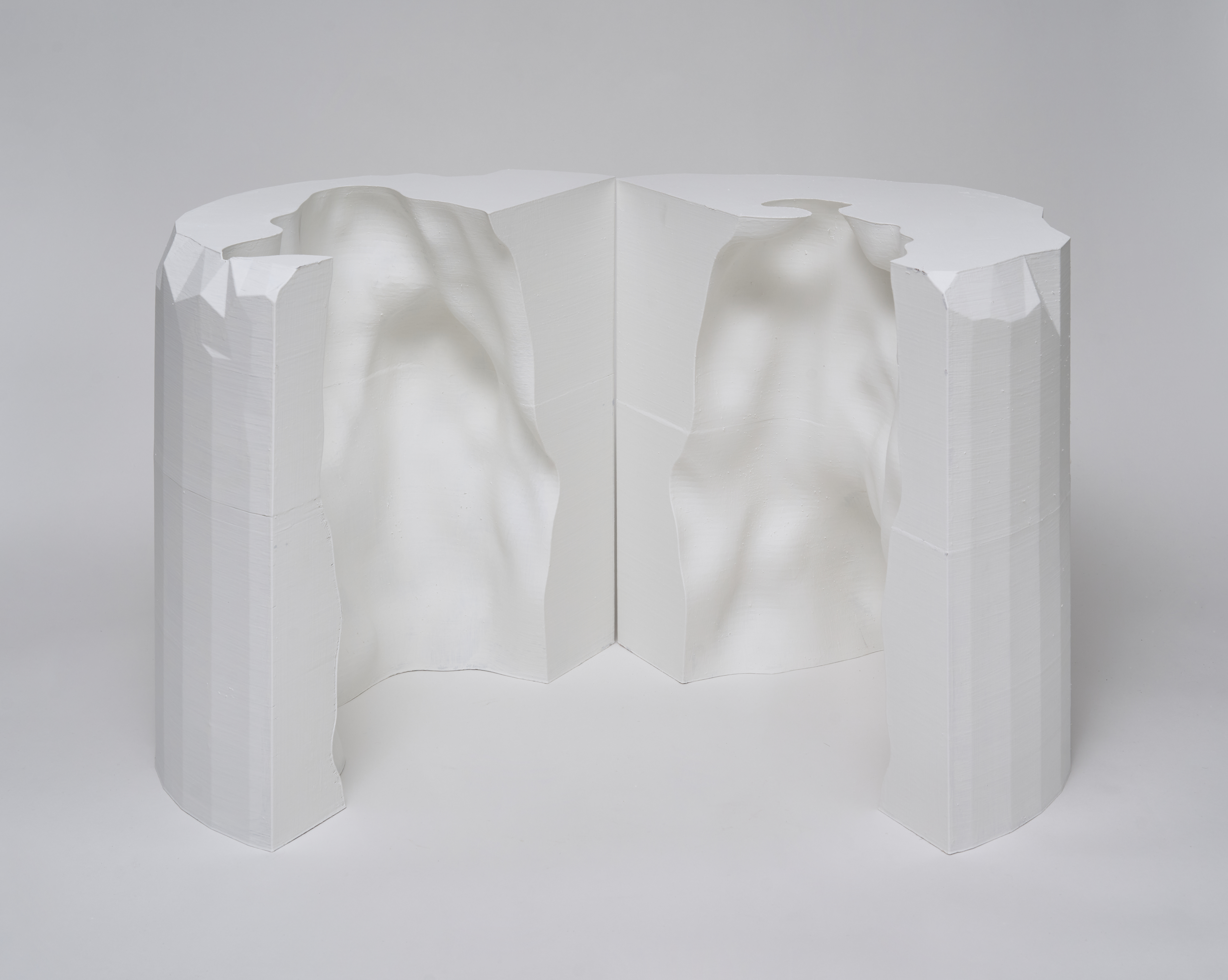
Fluid_Positive / Negative Stool
PLA, Rubber
2024
350 (W) X 350 (L) X 450 (H) mm


Grotesque
PLA
2024
90 (W) X 150 (L) X 150 (H) mm

